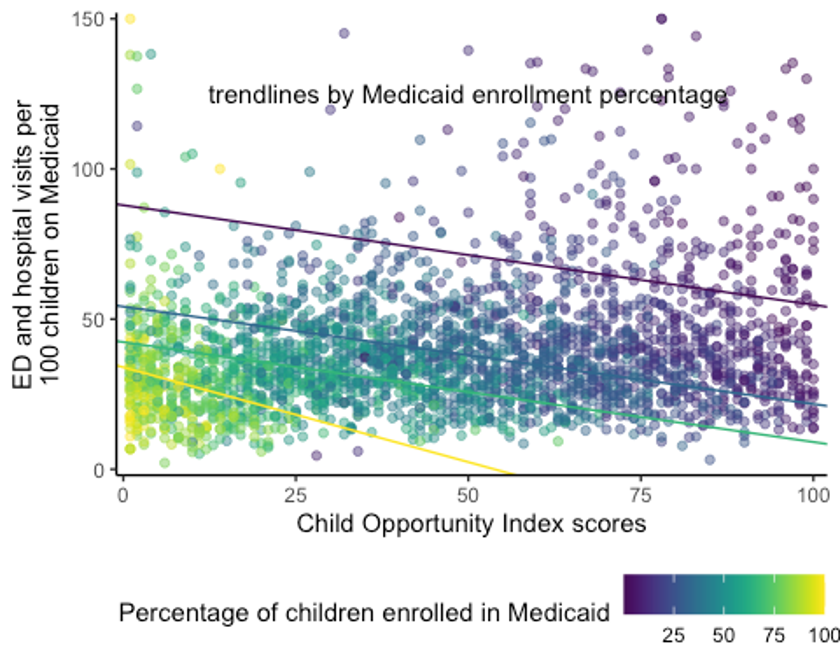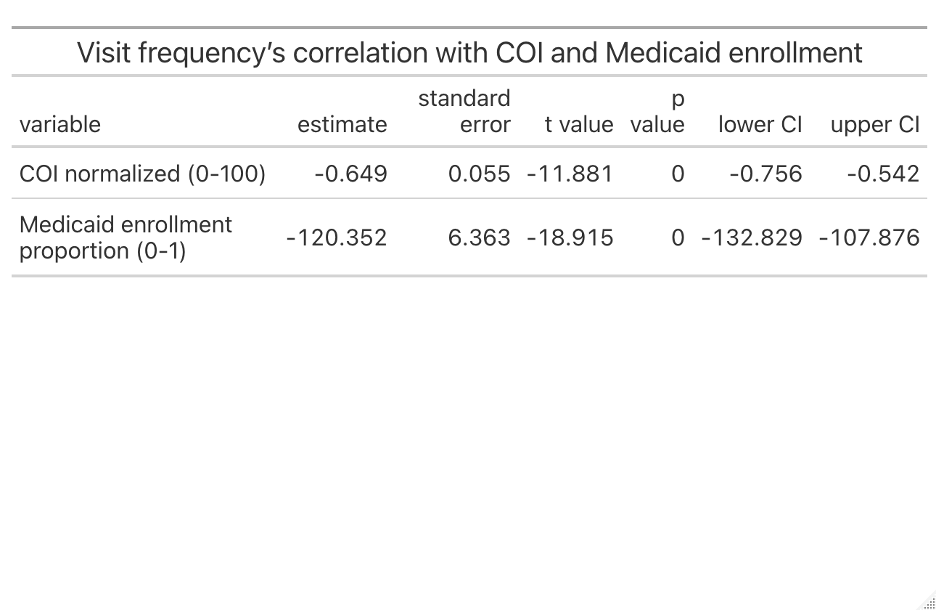Health Equity/Social Determinants of Health
Session: Health Equity/Social Determinants of Health 2
449 - Neighborhood opportunity is inversely associated with emergency department and hospital utilization for children on Medicaid
Friday, May 3, 2024
5:15 PM - 7:15 PM ET
Poster Number: 449
Publication Number: 449.612
Publication Number: 449.612

Mary Beth Yu, MD (she/her/hers)
Resident Physician
Loma Linda University Children's Hospital
Grand Terrace, California, United States
Presenting Author(s)
Background: Social determinants of health (SDOH) influence health outcomes and can drive healthcare inequities. Most previous studies have focused on adult metrics. The Child Opportunity Index (COI) is a measure of SDOH using indicators relevant to children.
Objective: Evaluate correlation between COI and rate of utilizing the emergency department (ED) and the hospital, in Michigan, at the level of census tracts.
Design/Methods: Three datasets were used: Medicaid data for ED and hospital visits in 2017 by pediatric patients in Michigan by census tract, census data for number of children and number of children enrolled in Medicaid in 2017 by census tract, and state-normed COI ratings as of 2015. There were 2,694 tracts in Michigan (98.3% of tracts, excluding water-only or special land-use areas) for which all 3 datasets had information. We performed linear regression to analyze how frequency of ED and hospital visits is affected by COI and Medicaid enrollment percentage. For subset analysis by Medicaid enrollment percentage, breakpoints were 25%, 50%, and 75%.
Results: Multivariable linear regression showed that both neighborhood opportunity and Medicaid enrollment rates were negatively correlated with visit frequency. Adjusting for Medicaid enrollment percentage, a 10-point increase in COI score (better opportunity) was associated with an average decrease of 6.5 visits per 100 children on Medicaid (95% confidence interval (CI) -5.4 to -7.6). A 10-percentage point increase in Medicaid enrollment was associated with a decrease in 12.0 visits per 100 children with Medicaid (95% CI -10.8 to -13.3). When census tracts were subdivided by Medicaid enrollment percentage, there was a negative correlation between COI score and visits in all subsets. Interaction analysis showed that the effect of COI on visit rates is increased if Medicaid enrollment rates are higher.
Conclusion(s): Children on Medicaid in higher COI census tracts were less likely to utilize the ED or hospital. However, utilization was higher in neighborhoods with lower rates of Medicaid enrollment. For children on Medicaid living in such tracts, the positive effects of increasing COI might be attenuated by lack of preventive care resources available to them based on insurance. When policymakers and physicians plan to improve neighborhoods, it may be helpful to consider the impact of health insurance types, and ensure that the children on Medicaid are not left behind. Future work may include repeating this analysis with data from other states.


